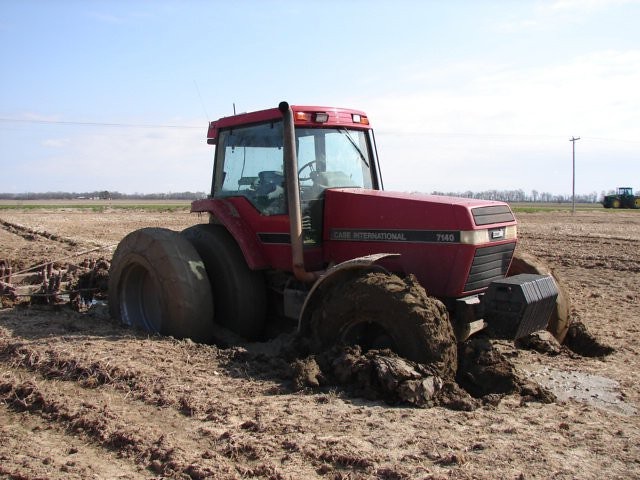A long-term strategy for avoiding muddy pastures
March 18, 2024
By the U of A System Division of Agriculture
Fast Facts:
- Forage use, pasture layout key to long-term health of area
- Grazing management necessary in areas receiving intense periods of rainfall
(439 words)
(Newsrooms: 'senesced' in par. 11 is c.q.)
FAYETTEVILLE, Ark. — The past winter in Arkansas has been cold and wet, with cycles of freezing and thawing that have often resulted in muddy pastures and access roads for many producers. This can put a strain on both livestock and equipment.
Despite the near-perennial nature of this recurring situation, once spring has sprung, it’s often all but forgotten until the next hard winter comes around.
Dirk Philipp, associate professor of forage agronomy for the University of Arkansas System Division of Agriculture, said there are several things, however, that livestock producers can do to alleviate this situation over the long term.
“Soil types and textures are diverse, and many farms feature multiple soil series, each with its own hydrology,” Philipp said. “Learning about these features and finding information is important to water resource management.”
A good start, Philipp said, is the Natural Resources Conservation Service’s Web Soil Survey, which provides information on soil hydrology and the original native vegetation that covered the area. The NRCS data can be used to establish forages in the long-term that can cope with various conditions, be they wetter or drier.
“Eastern gamagrass and switchgrass work well for wetter areas and along creek beds,” Philipp said. “These can be extended at the desired widths and grazed, hayed, or both. Tall fescue can be used in somewhat wetter conditions as well, and orchardgrass in shaded environments.”
Philipp said that along former and existing creek beds, trees can be reestablished, but should be spaced to allow enough light for forages to grow underneath.
The other obvious key to taming a muddy pasture is good grazing management. Given the high rain intensity frequently seen in Arkansas, as well as the prevailing soil types in the region, mud cannot entirely be avoided.
“But there are a few management principles that help keep pastures healthy,” Philipp said.
If needed, assign a pasture for hay feeding during winter. The area should be large enough to move feeders around and place bales strategically to avoid excessive trampling.
“The sacrifice pasture should have good drainage, be on higher ground and placed strategically so that if runoff occurs, you can capture the nutrients in another pasture,” Phillipp said. “Your prime perennial cool season and warm season forages should not be stocked for long periods during winter, unless you plan to graze off senesced material.”
Moist soil compacts rapidly, Philipp said, with long-term implications for weed control as many undesired species are able to out-compete forages on disturbed ground. Incorporating good grazing management with the appropriate grazing methods, such as rotational stocking, creep grazing and strip grazing, will help producers avoid the downsides of overstocking.
To learn about extension programs in Arkansas, contact your local Cooperative Extension Service agent or visit www.uaex.uada.edu. Follow us on X and Instagram at @AR_Extension. To learn more about Division of Agriculture research, visit the Arkansas Agricultural Experiment Station website: https://aaes.uada.edu/. Follow on X at @ArkAgResearch. To learn more about the Division of Agriculture, visit https://uada.edu/. Follow us on X at @AgInArk.
About the Division of Agriculture
The University of Arkansas System Division of Agriculture’s mission is to strengthen agriculture, communities, and families by connecting trusted research to the adoption of best practices. Through the Agricultural Experiment Station and the Cooperative Extension Service, the Division of Agriculture conducts research and extension work within the nation’s historic land grant education system.
The Division of Agriculture is one of 20 entities within the University of Arkansas System. It has offices in all 75 counties in Arkansas and faculty on five system campuses.
Pursuant to 7 CFR § 15.3, the University of Arkansas System Division of Agriculture offers all its Extension and Research programs and services (including employment) without regard to race, color, sex, national origin, religion, age, disability, marital or veteran status, genetic information, sexual preference, pregnancy or any other legally protected status, and is an equal opportunity institution.
# # #
Media Contact:
Ryan McGeeney
rmcgeeney@uada.edu
@Ryan_McG44
501-671-2120
